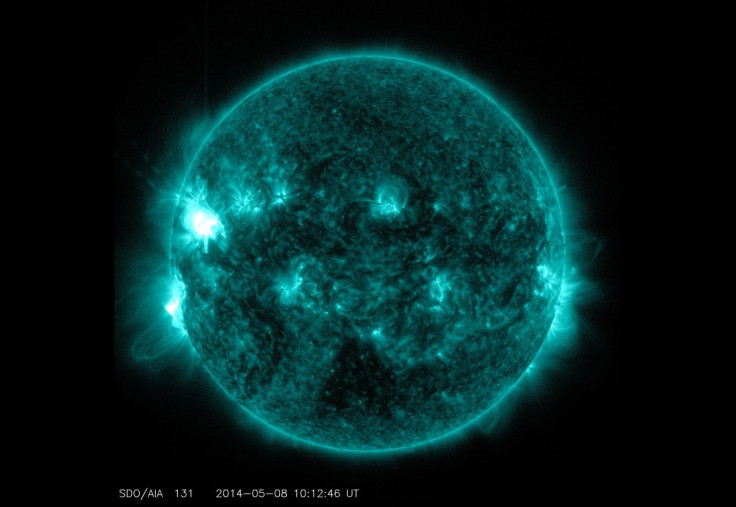NASA’s SDO Captures Image Of Mid-Level Solar Flare On Thursday
NASA’s Solar Dynamics Observatory, or SDO, captured an image of the sun emitting a mid-level solar flare on Thursday morning, the space agency announced.

According to NASA, Thursday’s solar flare was classified as an M5.2-class flare. M class solar flares are only a tenth as strong as the most intense flares, the X-class flares. This image, captured by NASA's SDO, shows light with a 131 Angstrom (1 angstrom equals one ten-billionth of a meter) wavelength, which highlights the extremely hot material in a solar flare, which typically appears teal in color.
Solar flares are powerful bursts of radiation observed over the sun’s surface. The flares eject clouds of electrons, ions and atoms through the corona of the sun into space, which typically reach Earth a day or two after the event.
While harmful radiation from a solar flare cannot penetrate the Earth's atmosphere to physically affect humans on the ground, when intense enough, the flares can disrupt communications on Earth by causing a disturbance in the part of the atmosphere where several communications satellites orbit the planet.
NASA takes pictures of the sun and its surface to help it make accurate solar forecasts and monitor the sun’s behavior. In 2010, the space agency launched the SDO as part of the Living With a Star (LWS) program, one of the goals of which was to help scientists understand how the Sun–Earth system directly affects life on the planet.
Another goal of the SDO was to help scientists gain a better understanding of the influence of the sun on the Earth and near-Earth space by studying the solar atmosphere in many different wavelengths simultaneously. The SDO has also been investigating the sun’s magnetic field.
© Copyright IBTimes 2024. All rights reserved.












